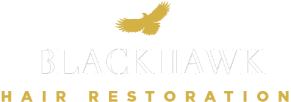How the Artas® Robotic Procedure Works
How the Artas® Robotic Procedure Works
Conveniently located in Danville to serve the entire Bay Area - San Ramon, Alamo, Walnut Creek, Moraga, Lafayette, Dublin, Pleasanton, Orinda, Castro Valley, Livermore Ask A QuestionTestimonialsHair restoration has evolved with the advent of the Artas® robotic system, offering a precise, minimally invasive solution for hair loss. This technology enhances the accuracy and efficiency of hair transplants, providing natural-looking results.
At Blackhawk Hair, we are proud to use this cutting-edge technology to deliver great outcomes for our patients. In this post, we’ll explore the step-by-step process of the Artas® robotic hair restoration procedure, from donor hair extraction to recipient site creation, and highlight its automated follicular unit harvesting and advanced imaging capabilities.
3D Customization and Planning
The Artas® robotic system begins with a comprehensive 3D imaging process. This technology captures detailed images of the patient’s scalp, creating a highly accurate model. Blackhawk Hair uses this model to plan the hair transplant according to the patient’s unique hair growth patterns and aesthetic goals.
By visualizing the outcome beforehand, we can design the most effective strategy for placing the hair follicles so that the results look natural and are tailored to the individual.This is a crucial step to ensure patients receive the best looking outcome.
High-Definition Stereoscopic Vision and AI Selection
A standout feature of the Artas® system is its high-definition stereoscopic vision coupled with artificial intelligence (AI). This advanced technology allows the robot to identify and select the healthiest hair follicles for transplantation accurately.
The stereoscopic vision provides a three-dimensional view, enhancing the robot’s ability to assess each follicle’s quality. On the other hand, the AI component ensures precision in harvesting, selecting only the robust follicles, which minimizes the risk of damage and maximizes the survival rate of the transplanted hair.
Donor Area Preservation
Preserving the donor area is important in hair restoration, and the Artas® system excels in this aspect.
Typically, the donor area is located at the back of the scalp where hair is more resistant to thinning. The Artas® robot meticulously extracts individual follicular units, causing minimal trauma to the surrounding tissue. This precision harvesting technique not only maintains the aesthetic integrity of the donor area but also promotes faster healing and reduces the risk of noticeable post-surgical marks.
Patients at Blackhawk Hair can trust that their donor area will be well-preserved with a natural appearance post-procedure.
Recipient Site Creation and Implantation
Creating recipient sites is a critical step in the hair restoration process. The Artas® system uses advanced algorithms to determine the optimal placement for each follicle. Factors such as the angle, depth, and direction of hair growth are calculated so that the transplanted hair blends seamlessly with the existing hair.
The robot then creates these recipient sites with high precision and then implants the harvested follicles. This automated process ensures consistency and accuracy, leading to a natural-looking hairline and overall result all while being orchestrated by the experts at Blackhawk Hair.
What This All Means for Our Patients
The Artas® robotic procedure at Blackhawk Plastic Surgery translates into a more comfortable and efficient hair restoration experience. The automation and precision of the Artas® system significantly reduce recovery times and minimize discomfort.
Patients can expect natural-looking results with improved hair density and a high success rate. The minimally invasive nature of the procedure means there is less downtime, allowing patients to return to their daily activities more quickly compared to traditional hair transplant methods.
Consult with Us
If you are considering hair restoration, the Artas® robotic procedure at Blackhawk Hair offers an innovative and effective solution. Our team is experienced in using this advanced technology to deliver exceptional results.
To learn more about how the Artas® robotic system can help you achieve your hair restoration goals, contact us to schedule a free consultation. We are here to guide you through every step of the process, ensuring a personalized approach that meets your specific needs.

